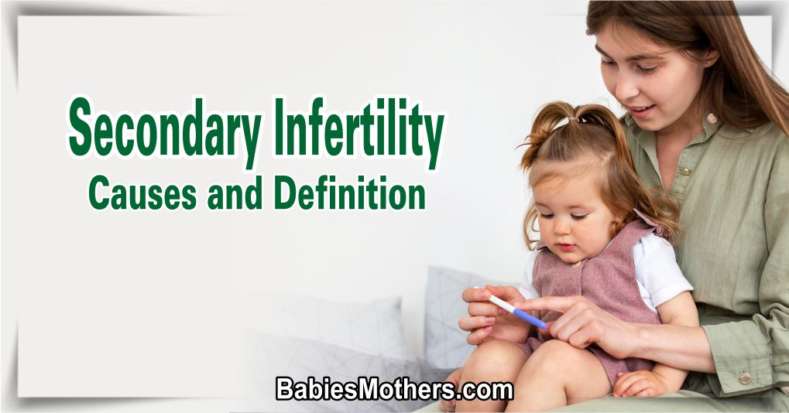Secondary Infertility
About 5.3 million Americans are affected by infertility. One in ten married couples faces some form of infertility. While some of these have a hard time conceiving the first child, others have a hard time conceiving for the next children. For those in the second group, there is secondary infertility.
For a woman who has a child, sometimes even several children, the diagnosis of secondary infertility can be a surprising and confusing situation. For this type of infertility to be considered “secondary infertility“, the first pregnancy does not necessarily result in birth. Even if your first pregnancy ended in a miscarriage or abortion, you have succeeded in the previous pregnancy. So the infertility problem you are experiencing now is “secondary infertility.”
Infertility Diagnosis
Diane Klapp, Medical Information Director at RESOLVE: The National Infertility Association and principal author of Resolving Infertility (Collins), says that there are general guidelines for a couple trying to conceive on their own before medical intervention is indicated: a year of attempting to conceive if the woman is under age 35 and only six months if she’s over 35, “unless she had a cesarean section, difficult delivery or irregular cycles,” in which case earlier intervention is suggested.
The medical workup used to diagnose secondary infertility is the same as primary infertility. The first step is to speak with your OB/GYN. Many women find that their medical practitioner is open to exploring fertility issues, but Leigh suggests going into the appointment armed with information. Diane Klapp also suggests seeing “a Reproductive Endocrinologist or a Gynecologist with additional training in infertility. Remind [readers] that the malefactor may have changed as well-so to check it right off.” In fact, during the relatively short span between your last attempt at conception and this one (typically a year or two), one or both partners may have gone through subtle biological but fertility-adverse changes.
Secondary Infertility Causes
An infertility evaluation entails a series of tests and can take from one to several months. Roughly 30 percent of infertility cases are diagnosed as a female issue, 30 percent are attributed to the male partner, 30 percent a shared factor between partners, and in 10 percent of infertility cases, the cause remains unidentifiable.
Sometimes the cause is not easily detected and, for women, further tests are needed, escalating invasiveness from simple blood tests to determine hormone levels to endometrial biopsy and laparoscopy (an examination of the uterus and fallopian tubes with a small microscope-like instrument.) Some or all of these tests may be indicated, depending on the suspicions of the medical team. Male infertility evaluations are relatively simple, including semen analysis and a physical examination by a urologist.
According to Dr. Eric Scott Sills, Division Director for Reproductive Endocrinology & Infertility, Department of Obstetrics and Gynecology at Atlanta Medical Center, “The evaluation for secondary infertility or miscarriage is complex and not entirely standardized. We begin by exploring the possibility of anatomical factors, coagulation defects, genetic abnormalities, hormonal imbalances, and malefactors (sperm DNA fragmentation) among other issues to help identify a correctable cause of secondary infertility. Attention to the emotional needs of our patients is critical during this evaluation process.”
Indeed, far more draining than the medical procedures is the emotional toll of infertility and even with the help of the best experts, there are no guarantees. There are, however, numerous organizations and websites offering emotional support, information, and advocacy, which Leigh found to be invaluable.
“Pregnancy takes place in a woman’s body, so I think there’s this assumption we carry that our body is failing, that we are defective,” states Leigh. “That mindset is devastating. You turn over your hopes and dreams to anyone you think might help, but you need to be knowledgeable and even assertive about your concerns. No one wants you to conceive as much as you do and no one is going to pursue options unless you make it a priority. You have to become your own fertility activist. The eventual outcome of overcoming infertility or secondary infertility might not be what you’d hoped, but at least you can know you are in control of your choices.”




